-
What are the functions of Blockchain Explorer Blockchain browse
-
Date:2024-04-11 18:53:10 Channel:Wallet Read:
Blockchain Explorer is a powerful tool that provides users with transparency and visual access to blockchain networks, allowing people to gain a deeper understanding of how blockchains work. Whether you are a blockchain beginner or an experienced enthusiast, it is crucial to understand the functions and usage of blockchain browsers. This article will delve into the functions of the blockchain browser and provide you with a detailed introduction to its uses and operation guidelines, allowing you to easily navigate the mysteries of the blockchain world.Blockchain browser is an online tool that allows users to view real-time data, transaction records, network status and other information of a specific blockchain. Through the blockchain browser, users can query key information such as transaction records, address balances, and block heights on the blockchain, achieving visual display of blockchain data and transparency of transactions. Different blockchain projects usually have their own blockchain browsers, such as Etherscan for Ethereum, Blockchain.com for Bitcoin, etc.The four most famous international exchanges:
Binance INTL
OKX INTL
Gate.io INTL
Huobi INTL
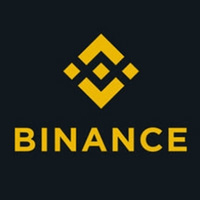
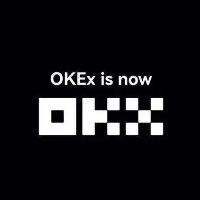
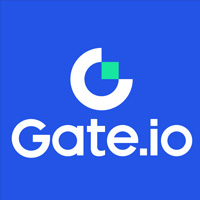

China Line APP DL China Line APP DL
China Line APP DL
China Line APP DL
Note: The above exchange logo is the official website registration link, and the text is the APP download link.
The functions of the blockchain browser mainly include the following aspects:1. **Browse blockchain data**: The blockchain browser allows users to view all transaction records, block information, address balances and other data on a specific blockchain. Users can query relevant information by entering addresses or transaction hashes, realizing a visual display of blockchain data.2. **Real-time transaction monitoring**: The blockchain browser can display the latest transaction records in real time, and users can learn about the transaction activities taking place on the blockchain network at any time. This is very helpful for transaction tracking and monitoring money flows.3. **Verify transaction status**: Users can verify whether their transactions have been confirmed through the blockchain browser, as well as confirm the block height and status of the transaction. This helps users understand the real-time status of transactions and ensures the security and accuracy of transactions.4. **Explore the blockchain network**: The blockchain browser also allows users to deeply explore the structure and status of the blockchain network, including node distribution, computing power distribution, blockchain historical data, etc. This helps users better understand the overall working mechanism of the blockchain network.5. **Smart Contract View**: For blockchain projects that support smart contracts, the blockchain browser can also allow users to view the source code, transaction records and execution status of the smart contract, helping users gain an in-depth understanding of the operation of the smart contract. Condition.Tutorials on how to use the blockchain browser are also a key part. Here is a brief introduction on how to use the blockchain browser for simple operations:1. **Visit the blockchain browser website**: First, open the official blockchain browser website of the blockchain project you are interested in, such as Etherscan or Blockchain.com.2. **Enter query information**: Enter the address, transaction hash or block height you want to query in the search box of the website, and then click the search button to query.3. **Browse query results**: You will see the query results page, which displays detailed data related to the information you entered, including transaction records, address balance, block height and other information.4. **Verify transaction status**: If you want to verify the status of a certain transaction, you can check the block height and confirmation status of the transaction to ensure that the transaction has been confirmed and there are no problems.5. **Explore more functions**: In addition to the basic query functions, you can also try to explore other functions of the blockchain browser, such as transaction chart analysis, address tagging, smart contract viewing, etc., in order to have a more comprehensive understanding of the area. Blockchain network.
**What is a blockchain explorer?**
Every day, whether on mobile phones or computers, we will definitely use web browsers such as Google Chrome.
UC Browser, etc. are used to browse various messages on different websites. Blockchain Browser also has a similar function. It is a practical tool that helps us browse transaction messages on the blockchain chain.
In addition to Bitcoin, there are also blockchain browsers for other currencies. For example, the Ethereum blockchain browser is a very commonly used one. However, we will focus on the Bitcoin browser today.
**How to start using Blockchain Explorer?**
This time we take btc.com as an example and walk you through the actual interface step by step. In fact, you only need to search on the homepage and enter the wallet address (Adress) and transaction ID (Tx
ID), block height number (Height) or block hash value (Hash), you can query it directly.
The two most common use cases encountered by users are as follows:
To check a specific transaction, the transaction ID will be entered.
Check the asset balance of a single address
**What information can be found in the blockchain browser?**
Based on the above two situations, we randomly query the transactions on btc.com and further explain the information inside:
To check a specific transaction, enter the ID of the transaction. We randomly checked the transaction ID as
The transaction for "9b9a91d56b1edc742b67809358b4c8faef4bc9a0fab3c7850287ce004e3286e7".
Let’s take a look at some basic information that everyone often sees:
Block height (Height): The blockchain is like building blocks, which are stacked continuously upwards, so the order of blocks is expressed by height. This height #599185 is the latest block produced at that moment.
Transaction confirmation (Comfirmation): After the transaction is packaged into a block and uploaded to the chain for the first time, a confirmation is completed, a new block is generated on top of the block, and a second confirmation is completed...and so on. Generally speaking, Said, after completing more than 6 confirmations, a transaction can be considered almost irreversible.
Timestamp: The time when the transaction was packaged and added to the blockchain by miners
Input (Input) & Output (Output): The principle is equivalent to the accounting T-ledger, Input is the debit (asset), and Output is the credit
Fees: The service fee for miners to package transactions and record them on the chain. The difference between Input and Output is the fee.
**Check address balance**
When querying the address, we mainly check the balance (Balance) and Tx Count
is the number of transactions that occurred in this address. Below is a list of messages for each transaction. The string on the left of the gray grid is the transaction ID. The amount input and output messages for the transaction are displayed below.
I'll answer.
Articles related to tags
- US Senator Bitcoin can vote with its feet Don’t create a hosti
- How to trade OK Wallet coins OK Wallet Trading Tutorial
- Taking stock of the mysterious creators of Bitcoin Who are thes
- How to download the Pancake Exchange APP Pancakeswap official w
- What does Bitcoin quarterly contract mean Popular explanations
- Rich Dad author Global economy may collapse Bitcoin is worth $
- Bitcoin price dropped by half What are Bitcoin miners and minin
- What should I do if my Bitcoin position is liquidated Do I have
- Which Bitcoin is cheaper OKEX or Huobi
- Is ANKR coin worth investing in Can I buy ANKR coins
user
2480
Ask
979K+
reading
0
Answer
3H+
Upvote
2H+
Downvote
-
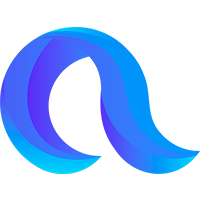 Artery Network(ARTR幣)在那裏挖?ArteryNetwork(ARTR幣)是一種新興的加密貨幣,它的採礦過程與比特幣和以太幣等其他加密貨幣類似。ARTR幣的挖礦過程是通過計算機資源解決複雜的數學問題來獲取新的幣。這一過程需要大量的計算能力和電力,因此挖礦者需要投入相應的硬件和電力成本。 A2025-03-26 21:33:09
Artery Network(ARTR幣)在那裏挖?ArteryNetwork(ARTR幣)是一種新興的加密貨幣,它的採礦過程與比特幣和以太幣等其他加密貨幣類似。ARTR幣的挖礦過程是通過計算機資源解決複雜的數學問題來獲取新的幣。這一過程需要大量的計算能力和電力,因此挖礦者需要投入相應的硬件和電力成本。 A2025-03-26 21:33:09 -
 Litbinex Coin(LTB幣)走勢如何LitbinexCoin LTB幣 作為一種加密貨幣,其價格走勢取決於市場供求和投資者對其價值的認知。在過去的一段時間裡,LTB幣的價格可能出現了一些波動,這可能是由於市場情緒、新聞事件或技術因素所引起的。 在過去的幾個月中,全球加密貨幣市場經歷了一些波動2025-03-26 21:33:03
Litbinex Coin(LTB幣)走勢如何LitbinexCoin LTB幣 作為一種加密貨幣,其價格走勢取決於市場供求和投資者對其價值的認知。在過去的一段時間裡,LTB幣的價格可能出現了一些波動,這可能是由於市場情緒、新聞事件或技術因素所引起的。 在過去的幾個月中,全球加密貨幣市場經歷了一些波動2025-03-26 21:33:03 -
 Starbound(SBD幣)最新動態SBD幣,即Starbound,是一种基于区块链技术的加密货币,旨在为用户提供一种快速、安全和低成本的支付方式。最近,Starbound团队宣布了一系列重大动态,以提升其在加密货币市场的地位和影响力。 首先,Starbound团队宣布他们已经与几家知名的加2025-03-26 21:32:59
Starbound(SBD幣)最新動態SBD幣,即Starbound,是一种基于区块链技术的加密货币,旨在为用户提供一种快速、安全和低成本的支付方式。最近,Starbound团队宣布了一系列重大动态,以提升其在加密货币市场的地位和影响力。 首先,Starbound团队宣布他们已经与几家知名的加2025-03-26 21:32:59 -
 Catcoin(CATS幣)最新新聞最新消息指出,Catcoin(CATS幣)在近期取得了巨大的成功,吸引了越來越多投資者的關注。這種加密貨幣是專為貓主人和貓愛好者而設計的,旨在建立一個支持貓咪社群的加密支付系統。 Catcoin的價值一直在不斷上漲,吸引了許多散戶和機構投資者的投入。這種加2025-03-26 21:32:54
Catcoin(CATS幣)最新新聞最新消息指出,Catcoin(CATS幣)在近期取得了巨大的成功,吸引了越來越多投資者的關注。這種加密貨幣是專為貓主人和貓愛好者而設計的,旨在建立一個支持貓咪社群的加密支付系統。 Catcoin的價值一直在不斷上漲,吸引了許多散戶和機構投資者的投入。這種加2025-03-26 21:32:54 -
 YFPI(YFPI幣)最新資訊YFPIYFPI幣是一種加密貨幣,它是由一個名為YFPI的去中心化金融平台所發行的。YFPI的目標是成為一個具有高度流動性和穩定價值的加密貨幣,讓用戶可以更方便地進行交易和支付。 最近,YFPI的價格一直在波動,受到市場情緒和投資者信心的影響。儘管如此,Y2025-03-26 21:32:49
YFPI(YFPI幣)最新資訊YFPIYFPI幣是一種加密貨幣,它是由一個名為YFPI的去中心化金融平台所發行的。YFPI的目標是成為一個具有高度流動性和穩定價值的加密貨幣,讓用戶可以更方便地進行交易和支付。 最近,YFPI的價格一直在波動,受到市場情緒和投資者信心的影響。儘管如此,Y2025-03-26 21:32:49 -
 WaveEduCoin(WEC幣)是詐騙?WaveEduCoinWEC幣是一個虛擬貨幣項目,宣稱旨在為教育領域提供解決方案。然而,有人對這個項目提出了質疑,認為WaveEduCoinWEC幣可能是一個詐騙項目。 首先,WaveEduCoinWEC幣的團隊背景和專業性受到質疑。許多投資者發現他們在官2025-03-26 21:32:43
WaveEduCoin(WEC幣)是詐騙?WaveEduCoinWEC幣是一個虛擬貨幣項目,宣稱旨在為教育領域提供解決方案。然而,有人對這個項目提出了質疑,認為WaveEduCoinWEC幣可能是一個詐騙項目。 首先,WaveEduCoinWEC幣的團隊背景和專業性受到質疑。許多投資者發現他們在官2025-03-26 21:32:43 -
 Pegs Shares(PEGS幣)符合當地法律嗎PegsShares(PEGS幣)是一種加密貨幣,目前在市場上並無法得到明確的法律規範。然而,對於加密貨幣的法律規定在各國各地可能有所不同,因此在使用和投資這種加密貨幣時需要謹慎對待。 在一些國家,加密貨幣被視為合法的貨幣形式,並受到相應的法律保護。然而,2025-03-26 21:32:36
Pegs Shares(PEGS幣)符合當地法律嗎PegsShares(PEGS幣)是一種加密貨幣,目前在市場上並無法得到明確的法律規範。然而,對於加密貨幣的法律規定在各國各地可能有所不同,因此在使用和投資這種加密貨幣時需要謹慎對待。 在一些國家,加密貨幣被視為合法的貨幣形式,並受到相應的法律保護。然而,2025-03-26 21:32:36 -
 JUS Token(JUS幣)總部在那JUSTokenJUS幣是一家总部位于新加坡的加密货币公司。新加坡是一个国际金融中心,拥有完善的法律体系和监管机制,吸引了许多加密货币和区块链公司选择在这里设立总部。 JUSTokenJUS幣总部位于新加坡的好处包括: 1 法律体系完善:新加坡的法律体系健2025-03-26 21:32:30
JUS Token(JUS幣)總部在那JUSTokenJUS幣是一家总部位于新加坡的加密货币公司。新加坡是一个国际金融中心,拥有完善的法律体系和监管机制,吸引了许多加密货币和区块链公司选择在这里设立总部。 JUSTokenJUS幣总部位于新加坡的好处包括: 1 法律体系完善:新加坡的法律体系健2025-03-26 21:32:30 -
 I-COIN(ICN幣)非法傳銷ICN幣是一種加密貨幣,類似於比特幣或以太幣,通過區塊鏈技術進行交易和存儲價值。然而,近年來有一些人利用ICN幣進行非法傳銷活動,給投資者帶來了風險和損失。 非法傳銷是指通過招聘下線、忽悠投資者參與項目來賺取高額回報的行為。在ICN幣的非法傳銷中,一些不法2025-03-26 21:32:27
I-COIN(ICN幣)非法傳銷ICN幣是一種加密貨幣,類似於比特幣或以太幣,通過區塊鏈技術進行交易和存儲價值。然而,近年來有一些人利用ICN幣進行非法傳銷活動,給投資者帶來了風險和損失。 非法傳銷是指通過招聘下線、忽悠投資者參與項目來賺取高額回報的行為。在ICN幣的非法傳銷中,一些不法2025-03-26 21:32:27 -
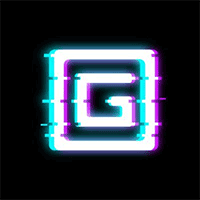 Glitch Protocol(GLCH幣)交易合法不GlitchProtocol(GLCH幣)是一種加密貨幣,其交易合法性取決於當地政府對加密貨幣的規定和監管。在一些國家,加密貨幣被視為合法的資產,可以自由交易和使用。然而,在一些國家,政府可能對加密貨幣實施嚴格的監管措施,甚至禁止其交易。 若要確定Glit2025-03-26 21:32:20
Glitch Protocol(GLCH幣)交易合法不GlitchProtocol(GLCH幣)是一種加密貨幣,其交易合法性取決於當地政府對加密貨幣的規定和監管。在一些國家,加密貨幣被視為合法的資產,可以自由交易和使用。然而,在一些國家,政府可能對加密貨幣實施嚴格的監管措施,甚至禁止其交易。 若要確定Glit2025-03-26 21:32:20
-
 Cat(CAT幣)的交易量CAT幣是一種虛擬貨幣,目前在加密貨幣市場中交易量相對較小。然而,隨著加密貨幣市場的不斷發展和成長,CAT幣的交易量也在逐漸增加。 CAT幣的交易量取決於市場需求和供應情況,以及交易所的交易活動。一般來說,CAT幣的交易量可能會受到市場情緒、新聞事件、技術2025-03-26 21:34:43
Cat(CAT幣)的交易量CAT幣是一種虛擬貨幣,目前在加密貨幣市場中交易量相對較小。然而,隨著加密貨幣市場的不斷發展和成長,CAT幣的交易量也在逐漸增加。 CAT幣的交易量取決於市場需求和供應情況,以及交易所的交易活動。一般來說,CAT幣的交易量可能會受到市場情緒、新聞事件、技術2025-03-26 21:34:43 -
 紅域(巧克力)(QKL幣)涉嫌詐騙紅域(巧克力)(QKL幣)是一種虛擬貨幣,近期涉嫌詐騙的傳聞不斷。根據一些用戶的投訴和報導,有人聲稱在投資這個虛擬貨幣時遭受了損失,而且無法取回投資的資金。 在這種情況下,投資者應該格外小心,避免受騙。首先,要確保所投資的虛擬貨幣是合法的,有穩定的背景和可2025-03-26 21:34:37
紅域(巧克力)(QKL幣)涉嫌詐騙紅域(巧克力)(QKL幣)是一種虛擬貨幣,近期涉嫌詐騙的傳聞不斷。根據一些用戶的投訴和報導,有人聲稱在投資這個虛擬貨幣時遭受了損失,而且無法取回投資的資金。 在這種情況下,投資者應該格外小心,避免受騙。首先,要確保所投資的虛擬貨幣是合法的,有穩定的背景和可2025-03-26 21:34:37 -
 Yukon(YUKON幣)倒閉了最近有傳聞指出,Yukon(YUKON幣)可能即將倒閉。這個消息引起了市場的驚慌和困憂,許多投資者和持有者都在擔心他們的資金和投資是否會受到影響。 Yukon是一種加密貨幣,最初是在2017年推出的。它在推出後吸引了很多投資者和用戶,因為它的技術和應用前景2025-03-26 21:34:33
Yukon(YUKON幣)倒閉了最近有傳聞指出,Yukon(YUKON幣)可能即將倒閉。這個消息引起了市場的驚慌和困憂,許多投資者和持有者都在擔心他們的資金和投資是否會受到影響。 Yukon是一種加密貨幣,最初是在2017年推出的。它在推出後吸引了很多投資者和用戶,因為它的技術和應用前景2025-03-26 21:34:33 -
 AGPC TOKEN(AGPC幣)不合法AGPCTOKENAGPC幣 是一种虚拟货币,它并不是任何国家的法定货币,也不受到任何监管机构的监管。因此,AGPCTOKEN 不具备合法货币的属性,也没有法律地位。在很多国家和地区,虚拟货币并不被认可为合法支付工具,因此使用AGPCTOKEN 进行交易可2025-03-26 21:34:27
AGPC TOKEN(AGPC幣)不合法AGPCTOKENAGPC幣 是一种虚拟货币,它并不是任何国家的法定货币,也不受到任何监管机构的监管。因此,AGPCTOKEN 不具备合法货币的属性,也没有法律地位。在很多国家和地区,虚拟货币并不被认可为合法支付工具,因此使用AGPCTOKEN 进行交易可2025-03-26 21:34:27 -
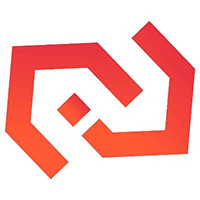 RentalChain(RNL幣)在中國禁止RentalChainRNL幣是一种基于区块链技术的租赁服务平台的代币,旨在通过区块链技术实现租赁行业的数字化和智能化。然而,由于中国政府对加密货币的监管政策非常严格,目前RentalChain在中国被禁止。 中国政府自2017年开始加强对加密货币的监管,2025-03-26 21:34:19
RentalChain(RNL幣)在中國禁止RentalChainRNL幣是一种基于区块链技术的租赁服务平台的代币,旨在通过区块链技术实现租赁行业的数字化和智能化。然而,由于中国政府对加密货币的监管政策非常严格,目前RentalChain在中国被禁止。 中国政府自2017年开始加强对加密货币的监管,2025-03-26 21:34:19 -
 FlapXCoin(FLAPX幣)是空氣幣FlapXCoinFLAPX幣並不是空氣幣,而是一種虛擬加密貨幣。空氣幣通常指的是沒有實際的價值或用途,只是為了炒作而被創建出來的虛擬貨幣。然而,FlapXCoin是一種經過加密技術保護的數字貨幣,具有真實的價值和用途。 FlapXCoin是通過區塊鏈技術2025-03-26 21:34:13
FlapXCoin(FLAPX幣)是空氣幣FlapXCoinFLAPX幣並不是空氣幣,而是一種虛擬加密貨幣。空氣幣通常指的是沒有實際的價值或用途,只是為了炒作而被創建出來的虛擬貨幣。然而,FlapXCoin是一種經過加密技術保護的數字貨幣,具有真實的價值和用途。 FlapXCoin是通過區塊鏈技術2025-03-26 21:34:13 -
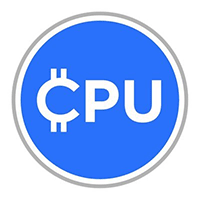 CPUcoin(CPU幣)是什麽CPUcoin是一种基于区块链技术的加密货币,旨在通过共享计算资源来提高计算机性能和效率。CPUcoin的目标是利用闲置的计算资源,例如个人计算机或数据中心的服务器,来为用户提供更好的计算服务。CPUcoin的核心概念是将计算资源共享化,使得用户可以通过共2025-03-26 21:34:07
CPUcoin(CPU幣)是什麽CPUcoin是一种基于区块链技术的加密货币,旨在通过共享计算资源来提高计算机性能和效率。CPUcoin的目标是利用闲置的计算资源,例如个人计算机或数据中心的服务器,来为用户提供更好的计算服务。CPUcoin的核心概念是将计算资源共享化,使得用户可以通过共2025-03-26 21:34:07 -
 XMZ(XMZ幣)APP下載地址XMZ(XMZ幣)是一種加密貨幣,它是基於區塊鏈技術的去中心化數字貨幣。如果您想要使用XMZ幣進行交易或投資,您可以下載XMZ的官方應用程序來管理您的資產。 XMZ應用程序可以讓您輕鬆地查看您的賬戶餘額、進行轉賬和收款。同時,您還可以通過應用程序查看最新的2025-03-26 21:34:02
XMZ(XMZ幣)APP下載地址XMZ(XMZ幣)是一種加密貨幣,它是基於區塊鏈技術的去中心化數字貨幣。如果您想要使用XMZ幣進行交易或投資,您可以下載XMZ的官方應用程序來管理您的資產。 XMZ應用程序可以讓您輕鬆地查看您的賬戶餘額、進行轉賬和收款。同時,您還可以通過應用程序查看最新的2025-03-26 21:34:02 -
 Sergey Save Link(SSL幣)近期會暴跌?近期,有一些市場分析師對SergeySaveLink SSL幣未來的走勢感到悲觀,認為它可能會暴跌。這種預測主要基於幣值波動性高和市場不穩定的情況下,SSL幣可能會受到影響而下跌。 首先,SSL幣是一種虛擬加密貨幣,價值受到市場供需和投資者情緒的影響。在市2025-03-26 21:33:58
Sergey Save Link(SSL幣)近期會暴跌?近期,有一些市場分析師對SergeySaveLink SSL幣未來的走勢感到悲觀,認為它可能會暴跌。這種預測主要基於幣值波動性高和市場不穩定的情況下,SSL幣可能會受到影響而下跌。 首先,SSL幣是一種虛擬加密貨幣,價值受到市場供需和投資者情緒的影響。在市2025-03-26 21:33:58 -
 Authoreon(AUN幣)近期會暴漲?近期,人們對Authoreon(AUN幣)的關注度正在逐漸增加,這可能導致其價格走勢出現一定程度的波動。有一些人認為,Authoreon的價格可能會出現暴漲的情況,這主要是基於以下幾個原因: 首先,Authoreon是一個新興的加密貨幣項目,它擁有一個強大2025-03-26 21:33:53
Authoreon(AUN幣)近期會暴漲?近期,人們對Authoreon(AUN幣)的關注度正在逐漸增加,這可能導致其價格走勢出現一定程度的波動。有一些人認為,Authoreon的價格可能會出現暴漲的情況,這主要是基於以下幾個原因: 首先,Authoreon是一個新興的加密貨幣項目,它擁有一個強大2025-03-26 21:33:53

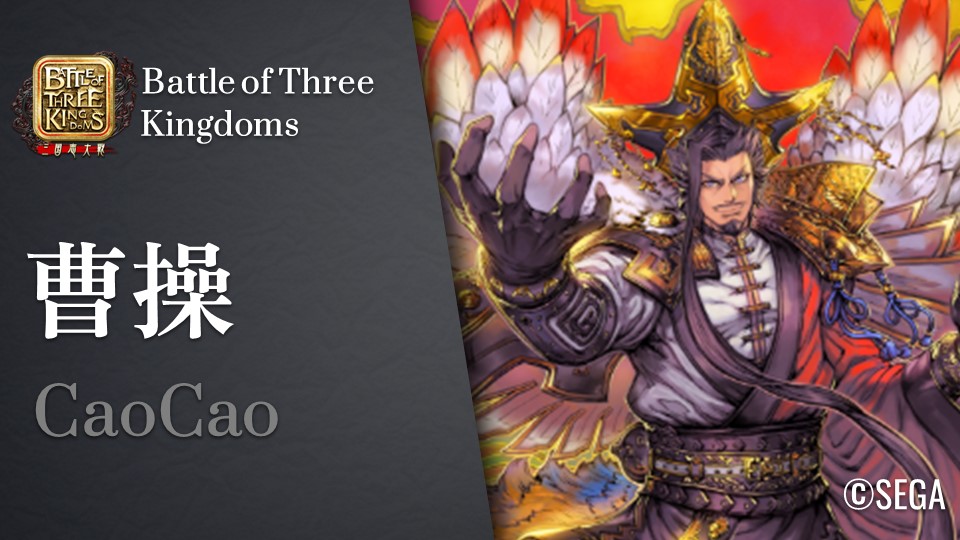
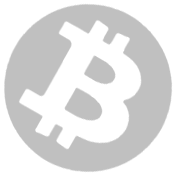 Bitcoin
Bitcoin Binance幣安
Binance幣安


